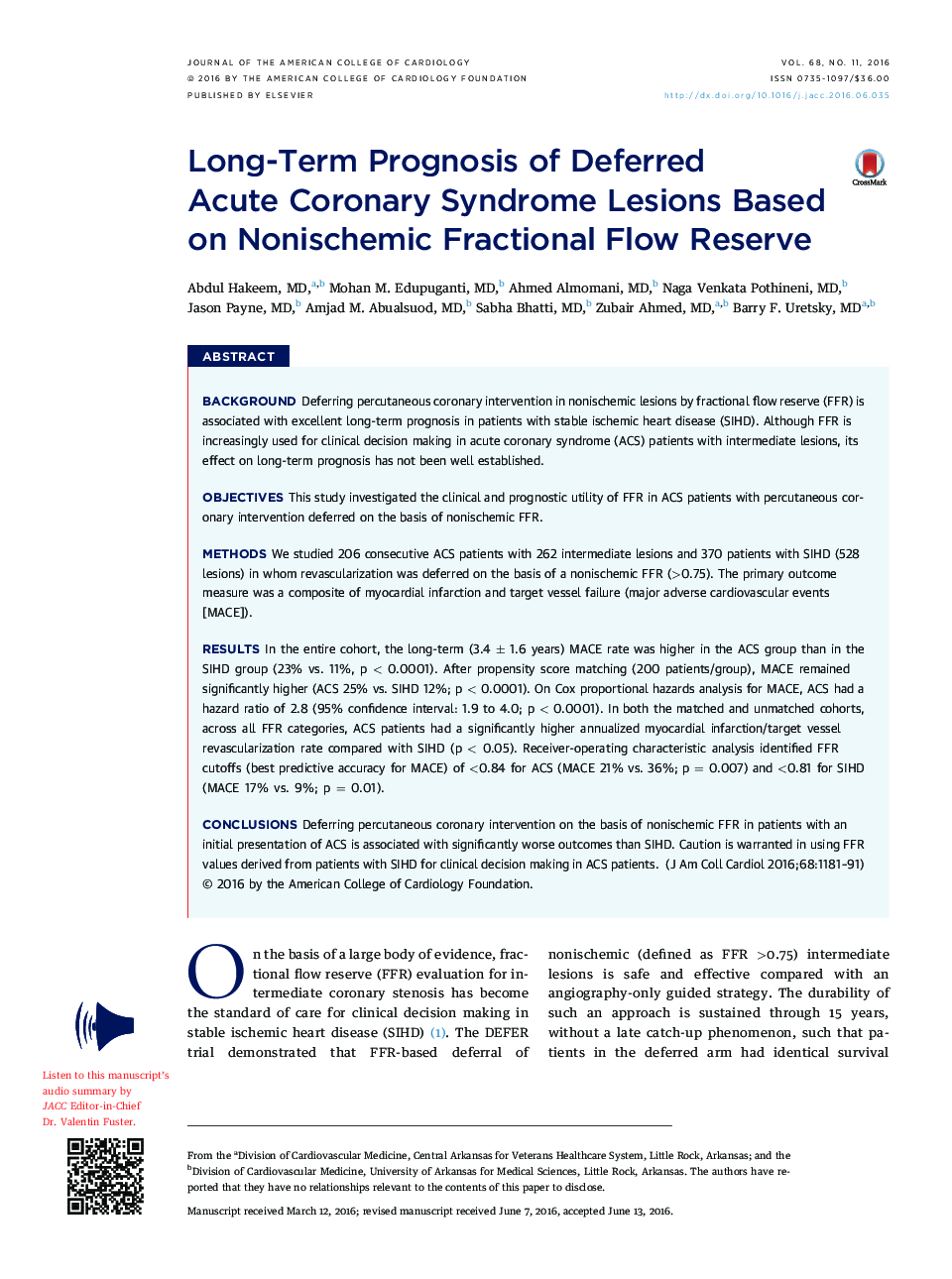| کد مقاله | کد نشریه | سال انتشار | مقاله انگلیسی | نسخه تمام متن |
|---|---|---|---|---|
| 2942721 | 1576976 | 2016 | 11 صفحه PDF | دانلود رایگان |
BackgroundDeferring percutaneous coronary intervention in nonischemic lesions by fractional flow reserve (FFR) is associated with excellent long-term prognosis in patients with stable ischemic heart disease (SIHD). Although FFR is increasingly used for clinical decision making in acute coronary syndrome (ACS) patients with intermediate lesions, its effect on long-term prognosis has not been well established.ObjectivesThis study investigated the clinical and prognostic utility of FFR in ACS patients with percutaneous coronary intervention deferred on the basis of nonischemic FFR.MethodsWe studied 206 consecutive ACS patients with 262 intermediate lesions and 370 patients with SIHD (528 lesions) in whom revascularization was deferred on the basis of a nonischemic FFR (>0.75). The primary outcome measure was a composite of myocardial infarction and target vessel failure (major adverse cardiovascular events [MACE]).ResultsIn the entire cohort, the long-term (3.4 ± 1.6 years) MACE rate was higher in the ACS group than in the SIHD group (23% vs. 11%, p < 0.0001). After propensity score matching (200 patients/group), MACE remained significantly higher (ACS 25% vs. SIHD 12%; p < 0.0001). On Cox proportional hazards analysis for MACE, ACS had a hazard ratio of 2.8 (95% confidence interval: 1.9 to 4.0; p < 0.0001). In both the matched and unmatched cohorts, across all FFR categories, ACS patients had a significantly higher annualized myocardial infarction/target vessel revascularization rate compared with SIHD (p < 0.05). Receiver-operating characteristic analysis identified FFR cutoffs (best predictive accuracy for MACE) of <0.84 for ACS (MACE 21% vs. 36%; p = 0.007) and <0.81 for SIHD (MACE 17% vs. 9%; p = 0.01).ConclusionsDeferring percutaneous coronary intervention on the basis of nonischemic FFR in patients with an initial presentation of ACS is associated with significantly worse outcomes than SIHD. Caution is warranted in using FFR values derived from patients with SIHD for clinical decision making in ACS patients.
Journal: Journal of the American College of Cardiology - Volume 68, Issue 11, 13 September 2016, Pages 1181–1191
